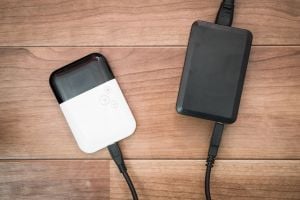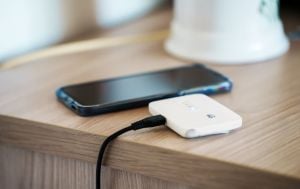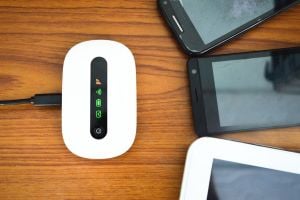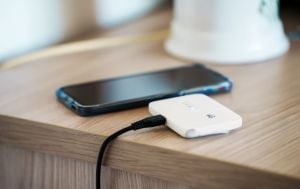Pull out everything in your bag right now. Phone? Check. Power bank? Check. Keys, notebook, random receipts? Sure. Now—imagine every single piece of tech in there suddenly losing its connection just because you stepped into an elevator, crossed a provincial boundary, or the café router coughed and died. In that instant, the humble pocket Wi-Fi becomes the MVP of your portable gear—your roaming bubble of internet that doesn’t care whether the bar’s router works or whether the airport lounge Wi-Fi asks you to watch a 30-second ad.
That’s why, even in 2025—when 5G banners plaster EDSA and fibre cables snake their way through subdivisions—people still tuck a pocket hotspot beside their wallet. And the first question they face is the same as it was a decade ago: Do I load it prepaid style, or sign my soul to a postpaid contract? Let’s break that down without the marketing fluff

Editor
Lloyd Kelly Miralles chevron_right
Table of Contents
Pocket Wi-Fi in 2025: why is it still a thing?
Sure, fixed fiber speeds keep climbing and average 5 G coverage is better than ever, but “better” isn’t the same as “everywhere.” Drop by a beach hostel in La Union or a farm stay outside Bacolod and you’ll find pockets where LTE still rules—or nothing rules at all. Meanwhile, rolling brownouts or construction mishaps can yank fiber offline in the city for hours. A pocket Wi-Fi gives you an escape hatch you control: charge it, stuff it in your bag, and you’ve got internet on tap for your laptop, tablet, or the family iPad in the back seat.
The Prepaid Route: pay-as-you-go freedom

How it works (plain-language edition)
You buy a hotspot, insert a prepaid SIM, and load data whenever you need it. No bills arriving every month, no credit checks, no termination fees lurking in the small print.
Typical prepaid gear and promos (May 2025 snapshot)
|
Brand / Device |
Up-front Cost |
Flagship 30-day Promo |
Best For |
|
Smart Bro Pocket Wi-Fi Advanced |
₱1,295 (free 15-day unli) |
UNLI 999 (30-day unlimited) |
Budget binge streamers |
|
Smart Bro 5 G Pocket Pro |
₱9,995 (free 15-day unli) |
UNLI 1299 (30-day 5 G unli) |
Power users who need speed everywhere |
|
Globe MyFi LTE-A |
₱999–₱1,499 |
HomeSURF 199 (23 GB + bonus) |
Casual surfing, student projects |
|
DITO Home 5 G Prepaid Kit |
₱4,990 (first 30 days unli) |
200 GB / ₱999 top-ups |
Families waiting for fiber |
|
Starlink Roam Kit |
~₱31 k hardware |
$165 / ~₱9 k monthly unli |
Remote workers off the grid |
Heads-up on Starlink: portable satellite dishes aren’t exactly “pocket,” but more digital nomads now stash one in the trunk for weekend overlanding trips. Just mind the peso drift whenever the exchange rate jumps.
Pros
- Ultimate flexibility – Skip a month, skip the bill.
- Zero paperwork – All you need is a valid ID to register the SIM.
- Hard data ceiling – When your load runs out, spending stops; no surprise surcharges.
- Easy resale – Most prepaid hotspots are network-unlocked.
Cons
- Micromanagement – Missing a reload deadline can strand you offline.
- Soft caps on “unlimited” – Many promos slow you down after a hidden threshold.
- Higher device cost up front – You shoulder the full retail price day one.
- Lower traffic priority – During tower congestion, prepaid data sometimes gets nudged behind postpaid.
The Postpaid Path: commit and cruise

How it works
Pick a monthly plan, sign a six- to 24-month contract, often get a discounted or free device, and pay a fixed bill each cycle, plus any overage if you smash through the included gigabytes.
Popular pocket-friendly postpaid offers
|
Plan |
Monthly Fee |
Included Data |
Notes |
|
Smart Signature Data Plan 599 |
₱599 |
10 GB + unlimited calls/text |
Six-month lock-in, device discounts on promos |
|
Globe GPlan Plus 1499 |
₱1,499 |
40 GB + unlimited calls/text |
No lock-in if you bring your own hotspot |
|
DITO 5 G Fixed Wireless Plan 1290 |
₱1,290 |
Unlimited data at up to 500 Mbps |
12-month lock, bundled indoor modem |
(The last one isn’t genuinely portable, but a lot of small offices treat it like a giant pocket Wi-Fi they can relocate in a pinch.)
Pros
- Bill predictability – Same amount, same date, every month.
- Traffic priority – Networks generally treat postpaid SIMs as VIPs during rush hours.
- Device subsidies – Handy if ₱10 k in one go hurts.
- Bundled perks – Streaming vouchers, cloud storage, or roaming data packs sweeten the deal.
Cons
- Lock-in headache – Early exit means paying the remaining months plus a termination fee.
- Credit checks – Freelancers or fresh grads sometimes get rejected.
- Potential bill shock – Blow past the cap and the meter keeps running.
A 12-Month Cost Showdown
Picture a content creator who needs unlimited data all year:
- Prepaid math → UNLI 999 × 12 months = ₱11,988
- Postpaid math → GPlan Plus 1499 × 12 months = ₱17,988
That ₱6 k difference is a long-weekend airfare, one M2 SSD upgrade, or four months of your favorite streaming bundle. If all you crave is data, prepaid wins. If you like one consolidated bill that covers calls, texts, and a bit of VIP speed, postpaid might still be worth the premium.
Speed, Coverage & the “VIP Lane” Myth

Coverage reality check
Smart still owns the widest 5 G footprint, Globe keeps closing gaps with hundreds of new sites each quarter, and DITO shows off the fastest average 5 G downloads in select cities. Translation: still no single carrier dominates absolutely every corner. Checking crowd-sourced maps (think nPerf or Cellmapper) before you commit is smarter than trusting glossy ads.
Congestion behavior
Most telcos refuse to publish the fine-print, but speed-test addicts notice a pattern: when the network is jam-packed—rush-hour MRT stations, concerts, festival grounds—postpaid SIMs often hold higher throughput than prepaid. It isn’t night-and-day, but if you’re livestreaming from a crowded arena, the extra margin can be literal broadcast insurance.
Which one matches your 2025 lifestyle?

Go Prepaid if…
- Your cash flow spikes and dips (hello, freelancers).
- You need a backup plan for brownouts or fiber cuts, not a daily driver.
- You travel occasionally and burst-load data for events or out-of-town shoots.
Go Postpaid if…
- Your employer reimburses connectivity.
- You hammer 4K Netflix nightly and can’t be bothered topping up.
- You run a small business and need official receipts plus predictable accounting.
Pocket Wi-Fi Tips & Gotchas for 2025

- Keep your SIM registered. The SIM Registration Act now requires annual re-verification. Ignore that text reminder and your hotspot goes dark.
- Watch the “fair use” clause. Even “unlimited” can throttle you after 250–350 GB. Read the footnotes—yes, really.
- Update your firmware. Most modern hotspots auto-check, but crack open the companion app monthly anyway; patches fix random disconnect gremlins.
- Consider eSIM-ready hotspots. Smart and Globe roll out eSIM activation on certain models, which is great if you need to manage foreign data plans when traveling.
- National Fibre Backbone Phase 3 is on the horizon. As wholesale bandwidth prices drop, expect promo refreshes and bigger data buckets—keep an eye out.
Time to choose—what’s in your bag?
Pocket Wi-Fi may not be flashy, but it’s still the Swiss-army-knife of Philippine connectivity—prepaid nails freedom and thrift; postpaid nails convenience and marginally cushier speeds. For many, the smartest move is a hybrid: use a postpaid SIM in your phone and keep a prepaid hotspot charged as your Plan B.
